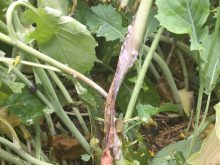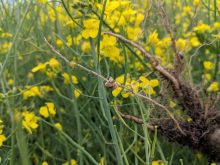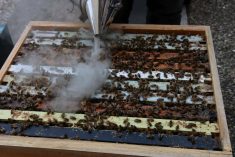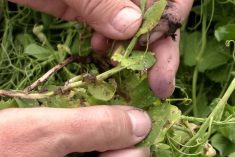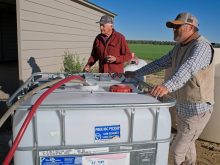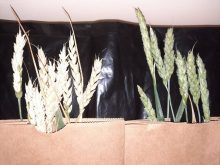Sclerotinia is a fungal stem rot disease caused by Sclerotinia sclerotiorum. It occurs throughout the Prairies, but its severity from year to year is variable as its development depends on the right environmental conditions occurring at its germination and infection phases.
Not just canola
Sclerotinia gets most of its attention as a disease in canola, but it is also a problem disease in a number of other crops, including vegetable crops in Manitoba. Soybeans, sunflowers, edible beans and canola are some of the more common crops grown in Manitoba that are susceptible to Sclerotinia, but the disease is known to infect over 400 plant species including many broadleaf weeds. Last season, soybean growers in Manitoba experienced conditions conducive to the development of white mould, caused by the fungus Sclerotinia sclerotiorum.
Read Also
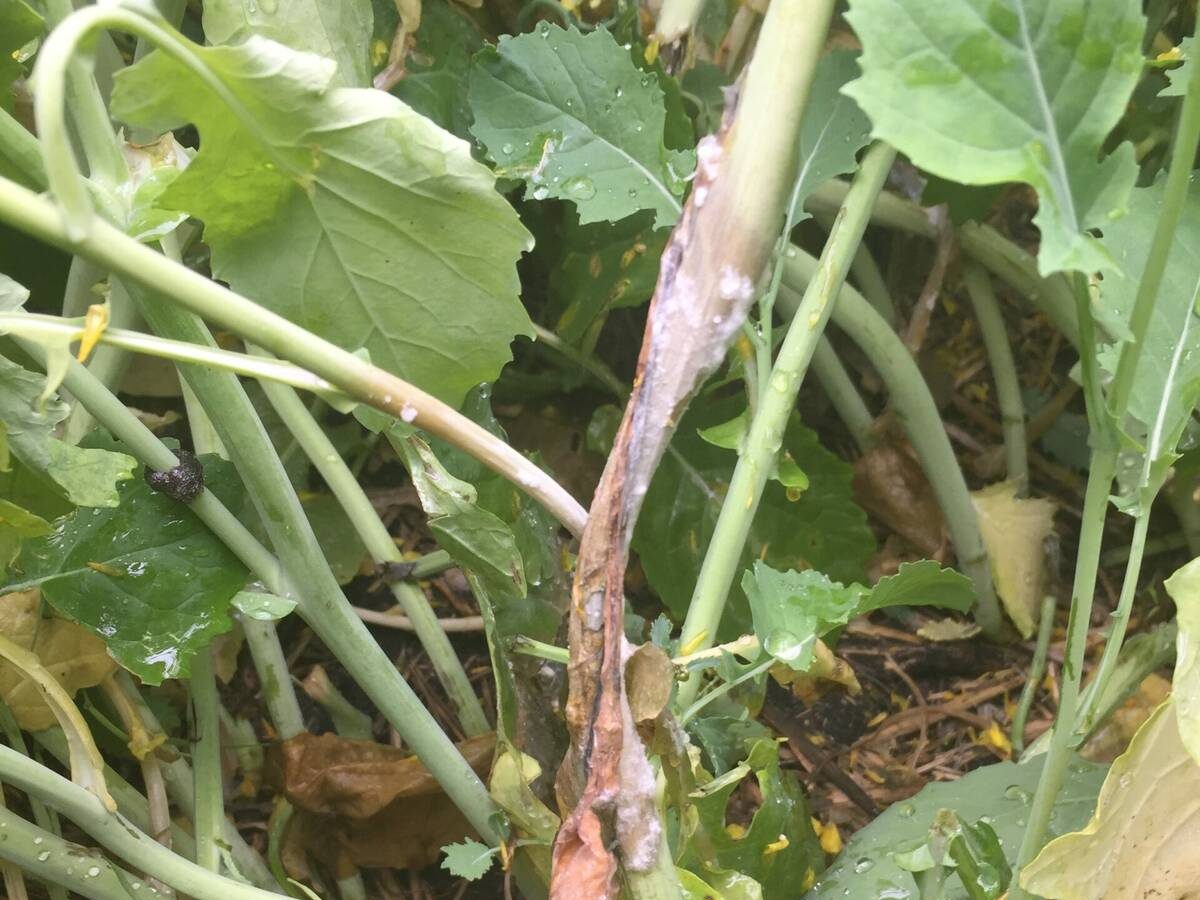
Good news, bad news for fungicides meant to fight stem rot in canola
A report shows overall insensitivity of sclerotinia to three fungicide groups hasn’t changed in a big way between 2010 and 2024 — but shows some sclerotinia populations have been discovered with elevated insensitivity to all three.
“At harvest time, an infected crop will have sclerotia in the stems, or heads in the case of something like sunflowers,” explains Dr. Vikram Bisht, plant pathologist with Manitoba Agriculture, Food and Rural Development. “Cultivation soon after harvest to bury sclerotia to at least a three inch depth may prevent the overwintering sclerotia bodies from producing spores in the following year and reduce inoculum in the field. However, that may not prevent disease altogether, since spores can blow in from nearby fields.” Though most sclerotia do not survive beyond one or two years, a very small percentage of sclerotia can remain viable in the soil for up to five years or more.
In the spring, the sclerotia will produce mushroom-like structures called apothecia if soil moisture is adequate for a long enough period of time. Generally in Western Canada the apothecia are produced in June — when the crop canopy, including nearby cereal crops, is starting to develop and close over. The apothecia then produce ascospores, which can be carried away on winds to infect surrounding crops. The ascopores can be carried long distances and will infect petals in flowering crops, which provide a food source the spores need to germinate and develop hyphae. When the petals drop down into the canopy the fungus can then enter the plant through any kind of wound or weakness in the stem. The ideal conditions to stimulate the sclerotia to grow and the ascospores to infect are high humidity levels in the canopy of the crop. Anything that encourages a dense crop canopy to develop, such as planting in narrow row widths or solid seeding, high seeding densities, early planting, high soil fertility or lodging can also provide a suitable environment for sclerotinia disease to develop.
From the Manitoba Co-operator website: Healthy soil the key to healthy profits
The final phase of development of the disease is the production of sclerotia. These are hard overwintering bodies that are formed in the stems or heads of the infected crop. They can remain in the stubble or fall to the ground and can remain dormant and viable for five or more years, waiting for the right conditions to kick-start development.
“Crop rotation is important when trying to manage sclerotinia disease,” says Bisht. “Short crop rotations or crop rotations that include several susceptible crops will lead to a build-up of sclerotia in the field. However, reducing the load of sclerotia in the field will not guarantee that Sclerotina will not occur.” Yield losses can be very significant in some crops, however, soybeans can sustain quite high levels of the disease without an appreciable loss in yield. †



